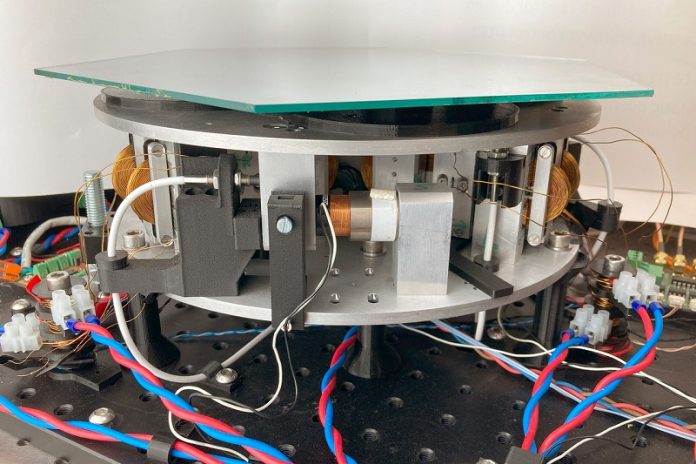
Have you ever tried to take a photo with shaky hands or write notes on a bumpy bus ride?
If so, you know how difficult it is to achieve precision when everything is shaking. In technical fields, even tiny, imperceptible vibrations can cause big problems.
High-performance microscopes and telescope mirrors, for example, need extreme precision, and the smallest vibrations can ruin their accuracy.
Now, a new type of vibration damping technology has been invented at TU Wien (Vienna University of Technology) to solve these problems using a clever trick with magnets.
This new invention could greatly improve the performance of devices that require high precision, like large telescopes.
The new technology uses electropermanent magnets. These magnets work like regular permanent magnets, which maintain their magnetism without needing a power supply.
However, they also have a special coil that allows their magnetism to be changed quickly with an electrical pulse. This feature makes it possible to actively suppress vibrations in precision instruments.
The system consists of a solid base and a free-floating platform above it. The platform is held in place by strong magnetic forces and can be fine-tuned with electromagnetic actuators.
These actuators can adjust the platform’s position with incredible precision, even when it is carrying a heavy load.
Professor Ernst Csencsics from TU Wien explains, “In sensitive applications, such as positioning mirror segments, the platform’s position must be kept stable to within a few tens of nanometers.” To put that in perspective, a nanometer is one-billionth of a meter!
This level of precision is essential to counteract even tiny ground vibrations, like those caused by someone walking outside the lab.
Traditional vibration damping systems use electromagnets, which require a constant flow of electricity to maintain their magnetic forces.
If the power stops, the magnetic force disappears instantly. Permanent magnets, on the other hand, stay magnetic indefinitely once magnetized but lack the flexibility of electromagnets.
The new technology combines the best of both worlds. An electropermanent magnet can maintain its magnetism without power but can also be adjusted with a quick electrical pulse.
This allows the system to hold the floating platform in place with no energy use, except for small corrections to counteract vibrations.
If the platform’s load changes or it needs to be tilted, a short, strong current pulse adjusts the magnet’s strength. This re-magnetizes the permanent magnet to a new setting, which then remains stable without further energy use.
The researchers at TU Wien have developed and patented this technology, showing that it can achieve extremely precise and energy-efficient vibration damping.
This technology is perfect for large telescopes made up of several mirror segments. Telescopes need to be precisely aligned to different parts of the sky, and the mirrors must stay stable in any position.
However, the potential uses go beyond telescopes. This technology could be applied to the precision production of semiconductor chips, high-quality optics, adaptive actuators, and precision measurement tools in laboratories.
Professor Georg Schitter, Director of the Institute, says, “Wherever you need the highest possible precision that could be disturbed by vibrations, our technology is an interesting solution.”
In summary, the new invention from TU Wien uses a combination of permanent and electromagnets to eliminate vibrations and achieve incredible precision. This breakthrough could revolutionize fields requiring exact measurements and stable environments, making it a significant step forward in technology.



